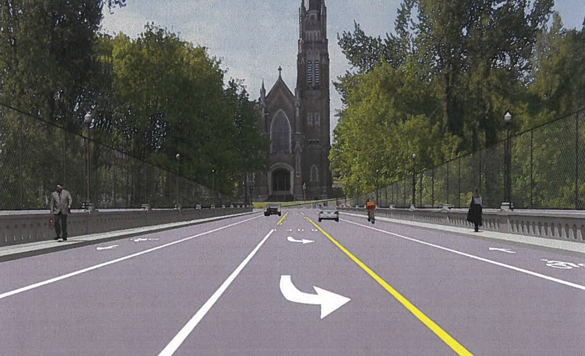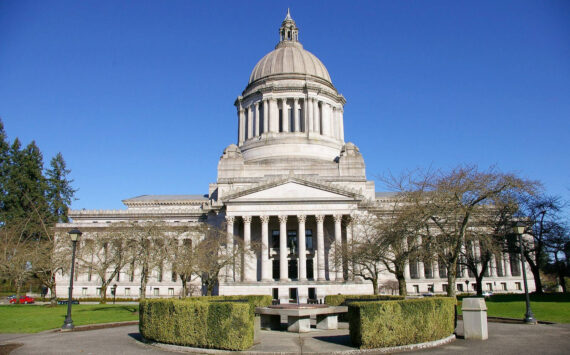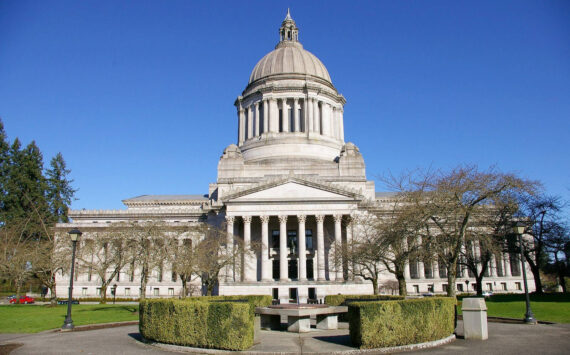Tacoma City Council’s environment and public works committee met Wednesday at City Hall to hear staff recommendations on a plan to rehabilitate the 80-year-old Tacoma Avenue South Bridge.
According to city engineers, the bridge’s beams, sidewalks, guard rails and deck have deteriorated so severely that lane closures and weight restrictions have been instituted. The $9 million rehabilitation will fortify the beams, replace the bridge deck, and add a new coat of paint. The project will also widen the bridge deck from 50 feet to 58 feet.
Two years ago, the City of Tacoma was awarded a $7.2 million federal grant to help pay for the project. The city is contributing $1.8 million. In August, the city awarded a $1.2 million contract to Bellevue, Wash.-based TranTech Engineering to draw up the design plans, which are approximately 20 percent complete. Construction is expected to begin this fall and last approximately one year.
During the meeting Wednesday, city staff presented three key project recommendations.
The first recommendation calls for completely closing the bridge instead of implementing phased closures during 12 months of construction. According to city engineers, a phased closure would consume $1 million of the $9 million budget and tack an additional six months onto the project timeline. The city plans to create a vehicle detour route using Delin Street and South G Street in order to address the long-term closure. Engineers are also exploring the possibility of allowing pedestrians and bicyclists across the bridge while the project is under way.
“The other thing, we talked to [the Washington State Department of Transportation] and they were telling us that if you have traffic loads next to bridge construction, the vibration of the traffic loads creates micro-cracks in the bridge, in the ‘green’ concrete,” city engineer Dan Soderlind told the council committee. “So you wouldn’t get as good of a product if you went with a phased closure, so that’s our reasoning with going with the full closure with the project.”
City engineer Kurtis Kingsolver added that completing the project in 12 months versus 18 months is important because the Washington State Department of Transportation (WSDOT) is preparing to begin another project nearby.
“One of the things we’re working on that does have us a bit concerned and why you see this proposal this way is we’re also working with WSDOT on Pacific Avenue,” said Kingsolver. “You’ve heard for a long time now that they are going to drop Pacific Avenue, L (Street), and McKinley, and now all of a sudden that is now ramping up. And so we are now looking forward to our closure in conjunction with their closure. We had a meeting with them, what, two weeks ago on this, and so we’re trying to work out how we can make the two projects work. I can’t tell you today that’s going to be wonderful. There is some overlap. But that’s partially why you’re seeing this today on a full closure, to try and help move those two along.
“We don’t do a lot of full closures,” added Kingsolver. “In fact, in my 23 years in here, I can probably count on one hand — without a few weeks here and there — [full closure] on any project just because they want to keep traffic moving.”
Another recommendation calls for installing concrete guard rails instead of steel guard rails. The recommendation has received support from the community largely because it provides a historic connection with the bridge
Finally, city engineers have recommended reducing the number of lanes for vehicles from four to two in order to allow room for a center turn lane, two lanes for bicyclists and two sidewalks for pedestrians.
Councilmember David Boe asked city engineers if the new bridge design would accommodate light rail. “Because Tacoma Avenue is one of the few places you can get to the south end if you are on a streetcar,” said Boe, who was disappointed to hear from engineers that light rail was not part of the plan. “In fact, one could argue it’s about the only place mid-hill or even top-hill height you can get through, other than Yakima [Avenue]. You can’t go up M [Street]. You can’t go up Pacific [Avenue] because it’s too steep. You can’t go up D Street because there’s a Sounder train coming across it.”
“When we did the grant in 2010, we had a fairly lengthy conversation with our prior city manager about this very topic,” Kingsolver explained. “His instruction to us at that time was to not move forward with that. That’s how we wrote the grant and why we have the project here today. I know, personally, I had more than one conversation about that.
“Ironically, the structure itself was rail years ago, if I remember correctly,” added Kingsolver. “It’s a beefy structure. It is already a very beefy structure and had rail on it years and years ago.”
Councilmember Ryan Mello asked city engineers to look into the cost and possibility of designing the bridge to accommodate light rail in the future. City engineers are expected to update the committe on the project in the near future.










